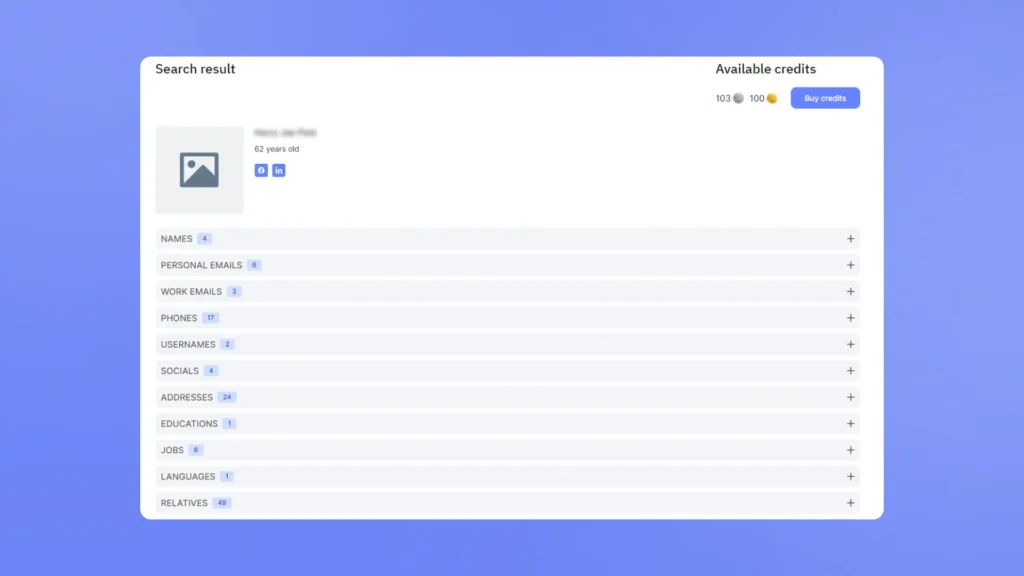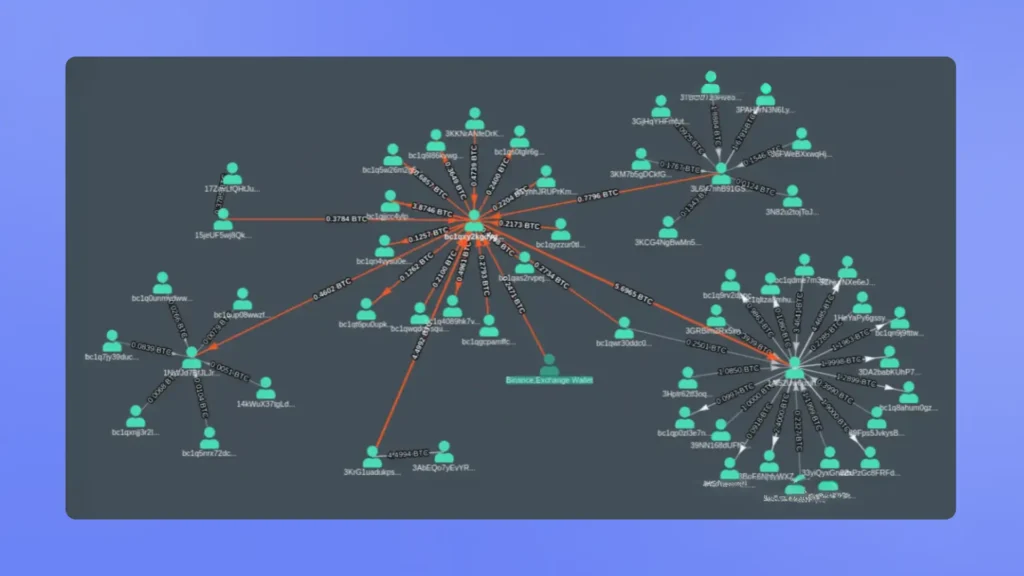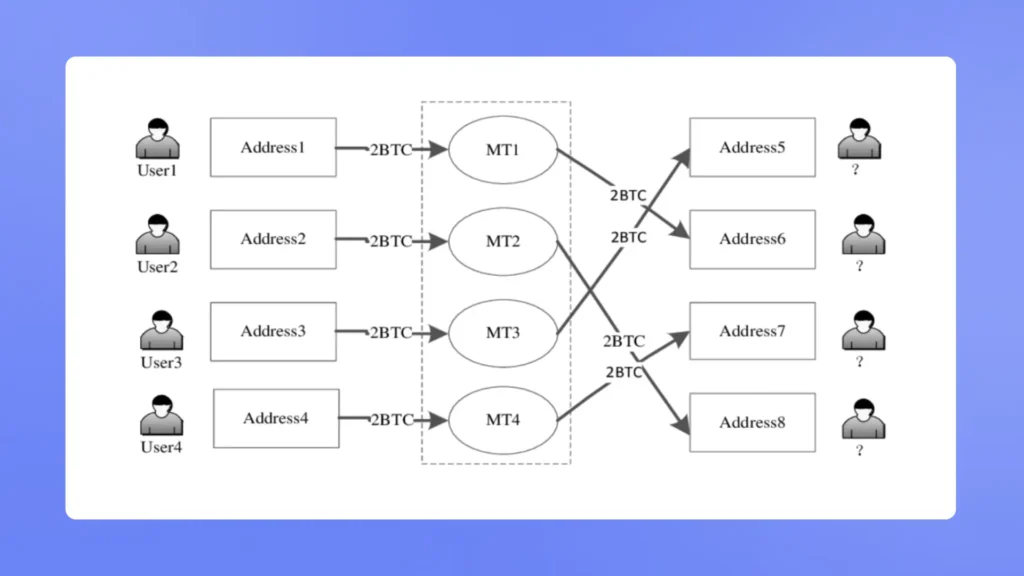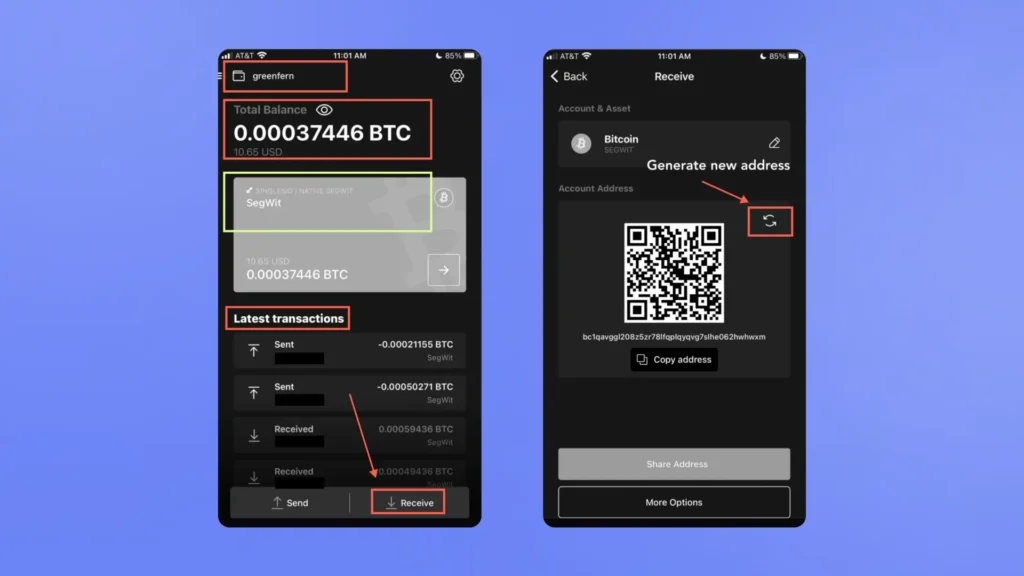

Anonymity is both the most attractive and the most dangerous aspect of the cryptocurrency. While you may benefit from having untraceable transactions, culprits often use nameless money exchange methods to scam the victims. In other cases, you might need to contact the person with whom you had a legitimate transaction, but all you have is a Bitcoin address. Learn how to expose one’s true identity even in case you have only the user’s crypto wallet with useful advice from the X-Ray Contact research team.
Why You May Need to Trace Bitcoin Address Owner?
You may need to track down an anonymous user if you find yourself in one of the following scenarios:
- Locating Fraudsters. Scam investigations are among the most common reasons for tracing Bitcoin address owners, since many people fall victim to culprits. For example, law enforcement agencies and private investigators often trace Bitcoin addresses to identify and bring to justice the fraudsters.
- Finding Deep Web Criminals. Unfortunately, criminals from the deep web often buy and sell illegal goods, services or content with cryptocurrency. Law enforcement agencies trace Bitcoin addresses to crack down on malicious transactions.
- Exposing Money Laundering Schemes. Since financial institutions and businesses must comply with anti-money laundering regulations, they should be prepared to monitor and report suspicious transactions. Tracing addresses helps in identifying and reporting illicit activities such as tax evasion or other crimes.
- Solving Cybercrime Cases. Hackers almost always choose cybercurrency over other traceable payment methods. For instance, Bitcoin is commonly used in ransomware attacks. Tracing the Bitcoin address can help identify the culprits and potentially recover the ransom.
- Checking on Taxpayer Compliance. During tax audits, tracing Bitcoin addresses helps in verifying the authenticity and accuracy of reported cryptocurrency transactions. That’s why you may need to locate a Bitcoin address to make sure all tax reports of the suspect are orderly.
Who Uses Bitcoin Blockchain Analysis?
In a nutshell, Bitcoin blockchain analysis is the process of examining and interpreting data from the Bitcoin blockchain to extract meaningful insights. Such an analysis involves using various techniques and tools to explore these transactions, identify patterns, and trace the flow of resources. This financial security enhancement method comes in handy for many organizations, such as:
- Police. Law enforcement agencies use blockchain analysis to investigate criminal activities with Bitcoin and other cryptocurrencies. It is their task to find fraudsters, save stolen assets and keep track of the illegal operations with the Bitcoin blockchain analysis.
- Government. Officials often use blockchain analysis to monitor and regulate the cryptocurrency market. The goal is to make sure that the market players follow all the governmental regulations, even in such a volatile domain.
- Banks. Such organizations benefit from blockchain analysis when it comes to making sure their operations with regulatory requirements and mitigating risks associated with cryptocurrency transactions. That’s how financial institutions minimize the inherent threat of crypto operations.
- Cybersecurity Business. The risks of the blockchain exchange led to the emergence of services aimed at helping clients make their transactions more secure. Thus, cybecurity firms make use of the blockchain analysis to protect the client’s digital assets and combat hacking attempts.
- Private Investigators. Blockchain analysis skill is useful for research experts hired to recover lost cryprofunds or trace the real Bitcoin address owner of a scam account.
How to Trace Bitcoin Address Owner in 3 Ways
No matter which industry you belong to or what is the reason for tracking down a Bitcoin address, you can rely on the same tips. Here are the most effective strategies for tracing a crypto wallet that can be applied in any domain:
Disclose Bitcoin Address Owner Identification Using a Blockchain Explorer
Apply blockchain explorers like Blockchain.com or BlockCypher to examine the transaction history of the Bitcoin address. Look for patterns, such as repeated transactions with the same addresses or common transaction amounts. It will help you to get additional clues about the real identity of the account owner or someone linked to this person. Take a look at a step-by-step guide on how to use these tools:
- Go to any blockchain explorer site of your choice to kick off the investigation.
- Input the Bitcoin address you want to investigate into the search bar. This will hopefully bring up the transaction history and other relevant details associated with the address.
- Next, review the transaction history of the Bitcoin address. Pay attention to frequently sent addresses, dates of transactions, sums of money sold etc.
- Take note of the patterns. Have they repeated a similar type of transaction to the same crypto wallet? Are there any suspicious transaction dates that reoccur regularly?
- Study the network of your target account. Click on any addresses that frequently interact with the Bitcoin address you’re investigating. Examine their transaction histories for further patterns or links to other actors.
- Check if any connected addresses are known to belong to specific entities, such as cryptocurrency exchanges, businesses or public figures. In the end, you will collect a library of clues that may point to the identity of the Bitcoin address owner based on tangent facts.
Use Additional OSINT Methods for Tracing Crypto Wallet Address
You can borrow tactics often used in open-source intelligence collection to reveal the true identity of the Bitcoin address owner. Here are some methods you can try for free to leverage your Bitcoin address investigation:
- Use search engines like Google to find any references to the Bitcoin address with the keyword search. Enter the Bitcoin address in quotation marks to find exact matches that can be mentioned on subreddits or found in the Discord leaks
- Look for mentions of the Bitcoin address on social media platforms. You are encouraged to search for posts or comments that mention the Bitcoin address on Facebook, exploit Twitter’s search function to locate discussions mentioning the Bitcoin address or find an Instagram page of the scammer that may have personal identification details. The possibilities are endless when it comes to social media intelligence.
- Make use of the publicly available databases. For example, the site BitcoinAbuse tracks Bitcoin addresses associated with scams. Enter the address of interest to see if it has been reported by the other users before.
X-Ray Contact Tools for Finding a Bitcoin Address

If you are looking for a more in-depth, automated and reliable OSINT method than a manual search, exploit X-Ray Contact tool to trace the Bitcoin address owner. The instrument works as a data aggregator that scans info from 16+ providers to find a match for your input data. This method is useful in case you manage to identify any additional details about the person, such as an email address, phone number, real name, image or a social media profile link. Follow these simple steps:
- Go to the main page of X-Ray Contact and select the “Platform” tab in the header. It will lead you to the page with the search options.
- Select a data clue that you managed to find with Name, Image, Email, Socials search or Phone Search.
- Wait till the algorithm looks for any matches with your input data. If the search is successful, you will receive a Search Profile with an overview of the target’s digital footprint, including real name, occupation, social media links, network, contact details and more.
Conduct a Cluster Analysis
Finally, you can initiate a cluster analysis investigation if you suspect that there is a large-scale scheme or entity involved. Cluster analysis involves grouping related Bitcoin addresses and transactions to identify patterns, relationships and potentially the people behind them.

Such tools as Elliptic cluster addresses together that are likely controlled by the same entity based on transaction patterns and other cues. That’s how you can trace Bitcoin address owner by identifying common connections between profiles with the same transaction patterns.
Here’s how a typical cluster analysis is carried out:
- You begin by entering the suspect Bitcoin address into the chosen blockchain analysis tool. This will initiate the process of gathering data related to this crypto wallet.
- Then, you will be able to study the direct transactions associated with the Bitcoin address. You should use the clustering algorithms provided by the analysis tool to group addresses that are likely controlled by the same entity.
- Afterwards, you should manually look for the patterns. A high frequency of transactions between certain addresses can reveal automated or coordinated behavior. Similar transaction amounts can be a sign of structured payments or laundering schemes.
- In order for your investigation to be effective, have a narrow focus on a few key Bitcoin addresses associated with the account. For example, you should take a closer look at addresses that have numerous connections or large transaction volumes. Moreover, you should check if any addresses in the cluster are known entities.
- Finally, refer to public databases like BitcoinAbuse for reported addresses. It can help you to trace Bitcoin address owner of a scammer you try to expose.

The Intricacies of Tracing Crypto Wallet Owner
Since cryptocurrency exchanges are traceless operations, the task of finding a real person who owns a Bitcoin address can be extremely hard. Some things can get in the way:
- Bitcoin addresses do not contain any personal information. Each address is a string of alphanumeric characters, and there is no direct link to the owner’s identity within the blockchain itself.
- Mixing services are often used to enhance privacy by combining the Bitcoin from multiple users and redistributing them. This process breaks the traceability of transactions and makes it significantly harder to follow the trail of Bitcoin.
- Some users employ strategies like address reuse and change addresses to further obfuscate their transaction history. Each Bitcoin transaction can generate a new address for the remaining balance, making it harder to track down new back to the same person.
- A single individual or entity may use multiple wallets and addresses to distribute their funds. Clustering these addresses is a hard task that only professionals can nail.

Hence, you should be prepared that your crypto wallet investigation can go awry even if you have followed all the research and preparation steps. That’s why you might consider requesting help from the authorities, centralized exchange support, private investigators or OSINT firms to find a scammer or boost the security of your system.
Conclusion
As crypto exchanges are a relatively new concept, it may be challenging to find appropriate means in order to reveal one’s Bitcoin address with minimum additional cues. Nonetheless, the combination of specialized methods like blockchain and cluster analysis with traditional OSINT techniques can help you to get closer to the person of interest. You can at least narrow down the pool of suspects or find fellow victims to join forces.


